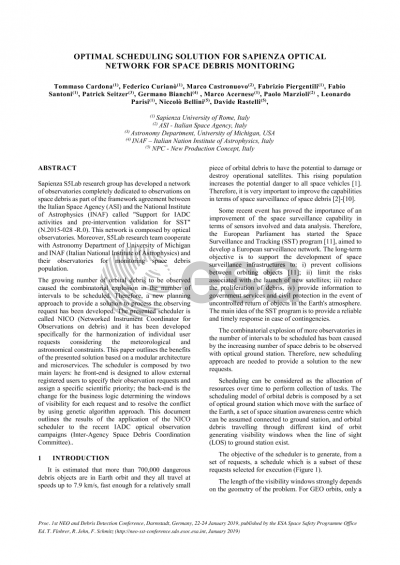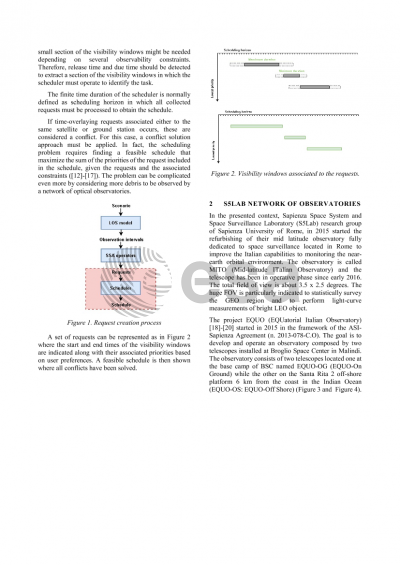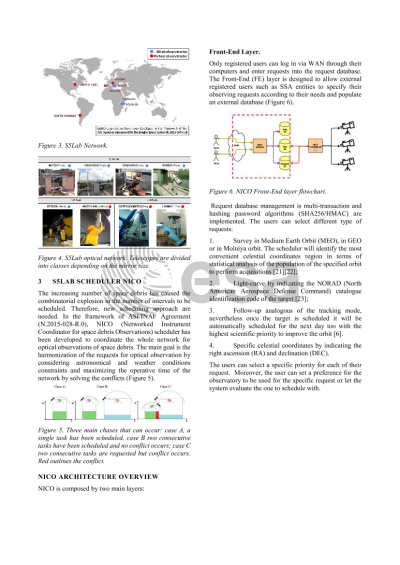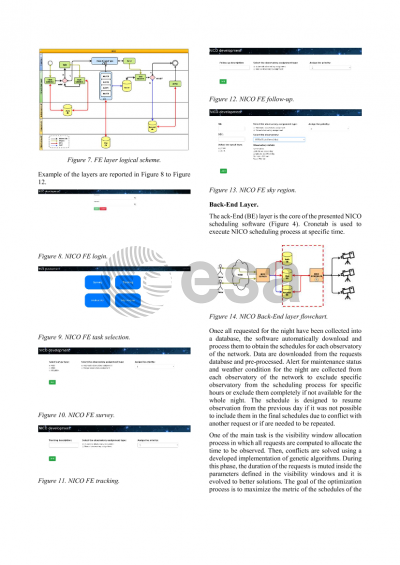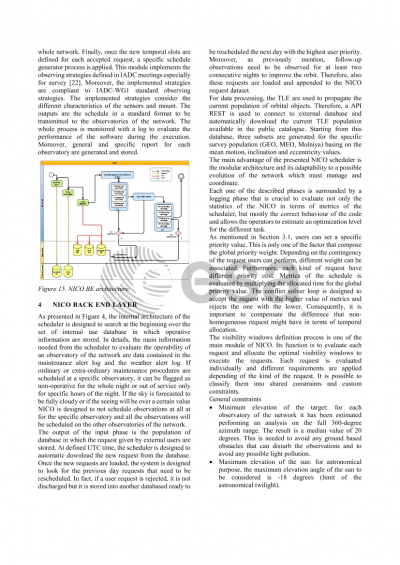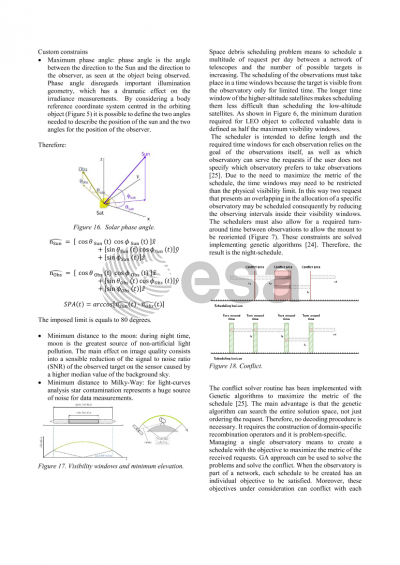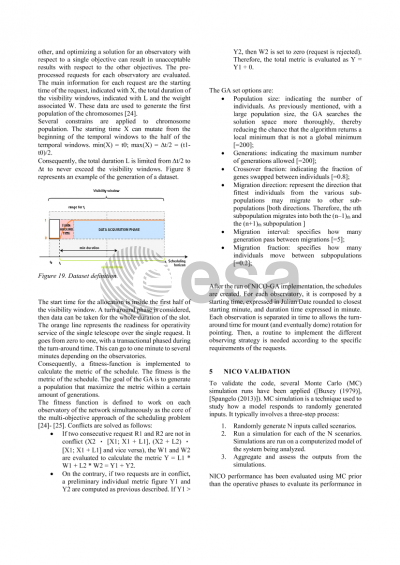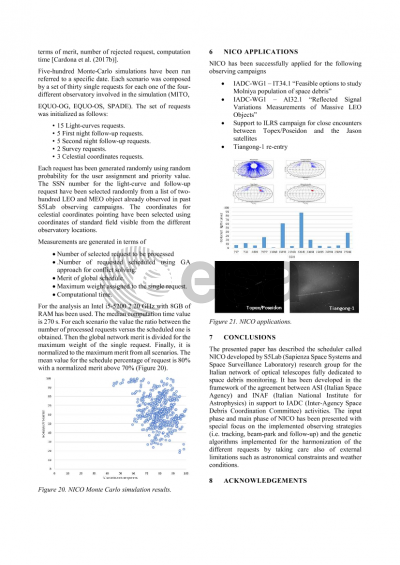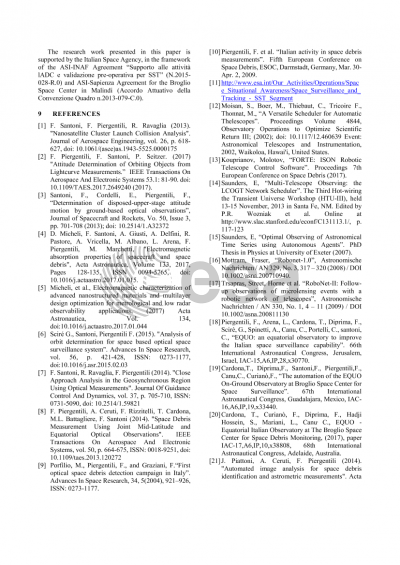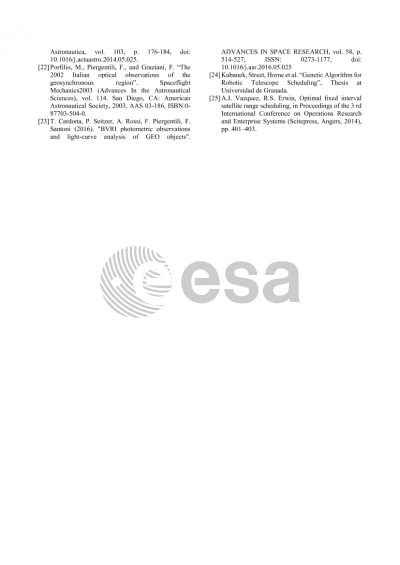Document details

Abstract
Sapienza S5Lab research group has developed a network of observatories completely dedicated to observations on space debris as part of the framework agreement between the Italian Space Agency (ASI) and the National Institute of Astrophysics (INAF) called "Support for IADC activities and pre-intervention validation for SST" (N.2015-028 -R.0). This network is composed by optical observatories. Moreover, S5Lab research team cooperate with Astronomy Department of University of Michigan and INAF (Italian National Institute of Astrophysics) and their observatories for monitoring space debris population.
The growing number of orbital debris to be observed caused the combinatorial explosion in the number of intervals to be scheduled. Therefore, a new planning approach to provide a solution to process the observing request has been developed. The presented scheduler is called NICO (Networked Instrument Coordinator for Observations on debris) and it has been developed specifically for the harmonization of individual user requests considering the meteorological and astronomical constraints. This paper outlines the benefits of the presented solution based on a modular architecture and microservices. The scheduler is composed by two main layers: he front-end is designed to allow external registered users to specify their observation requests and assign a specific scientific priority; the back-end is the change for the business logic determining the windows of visibility for each request and to resolve the conflict by usng genetic algorith apporach. This document outlines the results of the application of the NICO scheduler to the recent IADC optical observation campaigns (Inter-Agency Space Debris Coordination Committee).
Preview
